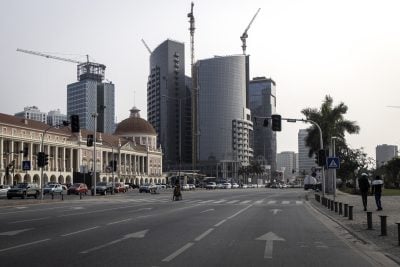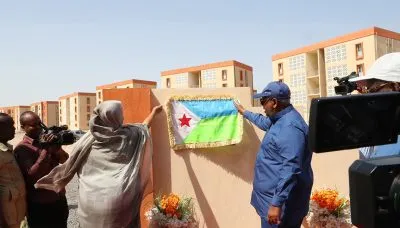A debt crisis is looming in Zambia, a country whose commodities-based growth had until several years ago placed it among Africa’s top economic performers.
Some have attributed the developing situation to the economic management of the Patriotic Front administration of President Edgar Lungu. Yet economists also argue that Zambia’s debt issues are the result of fiscal policies enacted over the past two decades that have prioritised the commodity sector at the expense of genuine diversification. According to Barclay’s Emerging Markets, no country’s sovereign debt has performed as poorly as Zambia’s this year. The fiscal deficit stands at 7.4%, with public debt having increased from 21% to 59% of GDP between 2011 and the end of 2017. As a result of this deterioration, Fitch downgraded Zambia’s credit status to junk on 11 October and forecast that debt would reach 69% of GDP by the end of 2019. Debt repayment has reached a quarter of government expenditure, two thirds of which is held in foreign currency and as such, is vulnerable to negative currency moves.
Lost opportunities
Zambia’s future was not always so uncertain. The noughties saw an economic boom, largely fuelled by rising copper prices. Growth averaged around 7% per year between 2000 and 2010. Consequently, foreign aid was reduced from 57% of government spending in 1995 to 5% in 2007. In 2000, Zambia was given a clean sheet on borrowing through IPEC debt relief measures, resulting in debt as proportion of GDP being slashed to almost 0%.
Anand Rajaram, country director of the IGC think tank, says that the reduced debt load should have allowed Zambia “to go forward without the burden of debt [and] manage their fiscal affairs better”. However, copper crashed from $4 a pound to $1.25 in 2011 amid a collapse in global demand. This decrease hit the country particularly hard, as copper accounts for a significant proportion of exports. The collapse in prices hit the fast growing construction and transport industries, which have long enjoyed a symbiotic relationship with rising commodities prices.
“The [growth] was still narrowly focused in small sectors,” says Rajaram. “The quality of the growth was therefore not inclusive.” Furthermore, the commodity firms that were operating in Zambia were attracted by generous tax allowances. The Financial Times in 2013 estimated that the Zambian economy was losing $2bn a year due to tax cuts and transfer pricing. The government has since taken a tougher stance on mining firms in the country: First Quantum received an $8bn tax bill in March 2018. Yet such moves could repel investment in the crucial sector.
Despite the commodities slump, government spending continued apace. When the late Michael Sata became president in 2011, government spending spiked. Civil servants saw a pay rise in September 2013, with the Lusaka Times reporting that the increase could be as high as 200%. That spending appears to have continued under the government of incumbent Edgar Lungu, while high-profile projects have run over budget.
Forty-two fire engines were purchased by the government in 2017 for $42m. Critics allege that at $1m per engine this was an increase of 70% on their face value. However, the government responded that given the specifications of the engines the price represented value for money. The price of tarmac may have been inflated. The World Bank in 2017 published a report that claimed that Zambians paid an astonishing $360,000 per kilometre, twice what the country’s close neighbours pay.
In September the British government suspended aid payments after allegations of corruption and fraud. The spending has led to a current deficit of 7.4%. The government aims to lower it to 6.5% by the end of 2019, but plans new foreign loans amounting to $2.1bn for 2019. As a response to the crisis, the central bank initially increased interest rates to 15.75% in April 2017 before it gradually rescinded to its currently level of 9.75%. Higher interest rates reduced domestic lending in the country, dampening economic growth and worsening the deficit through lower tax revenues.
Yet observers say that Zambia still has a chance to escape its precarious situation. “A crisis is when you have a run on the banks and when a currency is falling precipitously and these things are not occurring in Zambia,” says Rajaram.
Prospect of bailout
There has been speculation that the IMF could step in to support the economy with a bailout allegedly worth $1.3bn, yet the Fund is reluctant to move until stringent conditions are met: conditions that would likely see a reduction in government spending and restrictions on non-concessional borrowing.
It remains to be seen whether Zambia chooses to accept the IMF’s tough medicine. Cooperation between President Lungu and the IMF has increased from a low point last year when Lungu informed the IMF they were free to leave if they wished. The Fund’s reputation for imposing tough fiscal measures is unlikely to endear it to all Zambians. But Dan Ghura, one of the leaders of the African Division of the IMF, has urged a change of course. “In order to maintain growth and development there must be a reversal of Zambia’s loose fiscal stance,” he says.
The government appears to be listening. The 2019 budget, announced on 29 September, saw finance minister Margaret Mwanakatwe propose further revenue generation by increasing taxes, alongside government cuts. Mining royalties will increase by 1.5% across the board, a new 10% tax will be introduced when the price of copper exceeds $7,500 per tonne, and there will be an export levy on precious metals including gold of 15%.
The Zambian government expects growth to reach 4% this year, but more deficit reduction measures may be necessary if the Fund is to be persuaded to help out. This can only be achieved by curtailing government spending and raising revenues in a manner that is not detrimental to the economy.
Giorgio Berti
Want to continue reading? Subscribe today.
You've read all your free articles for this month! Subscribe now to enjoy full access to our content.
Digital Monthly
£8.00 / month
Receive full unlimited access to our articles, opinions, podcasts and more.
Digital Yearly
£70.00 / year
Our best value offer - save £26 and gain access to all of our digital content for an entire year!
 Sign in with Google
Sign in with Google 


